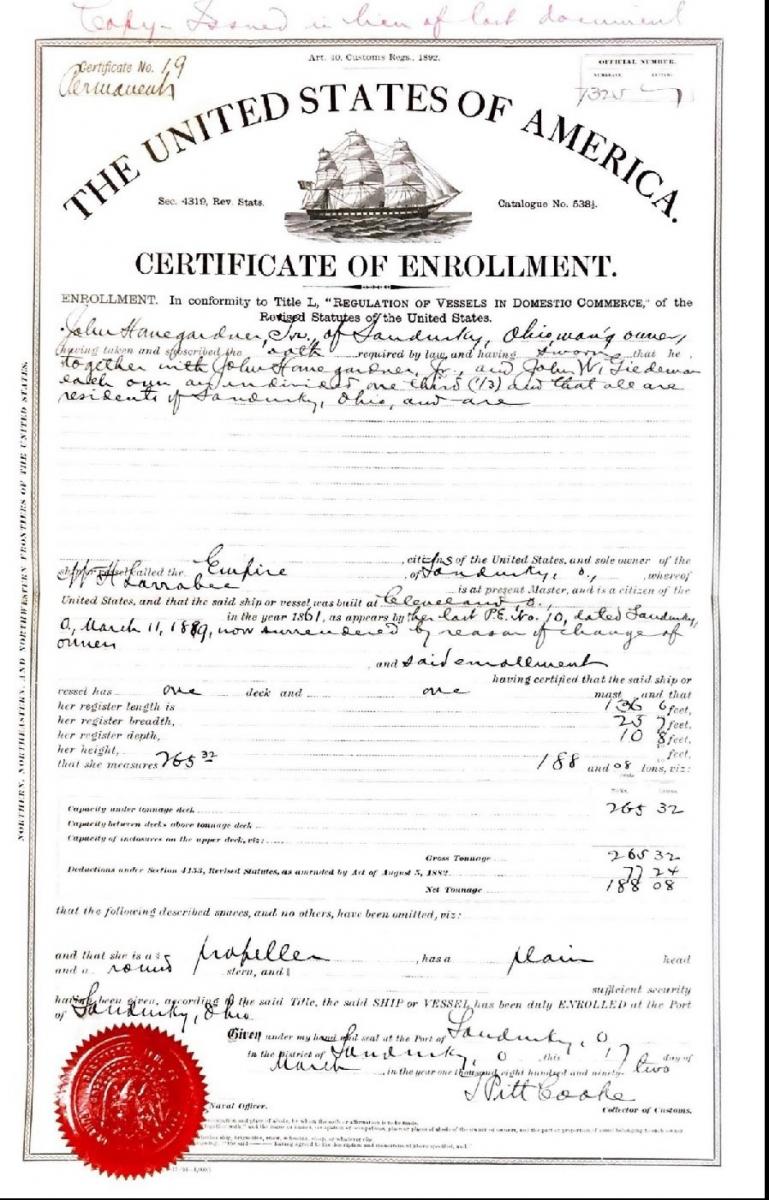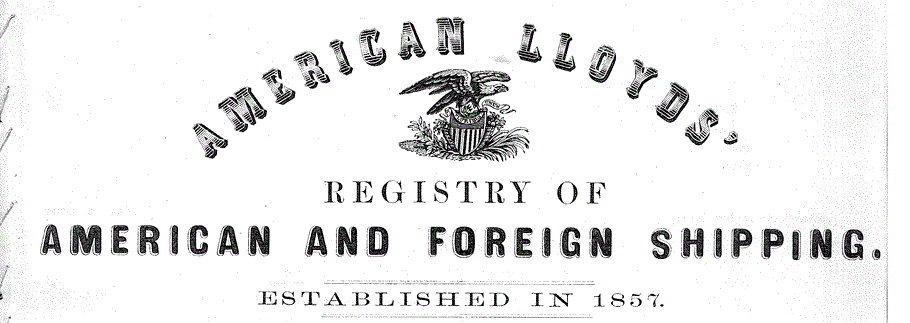
Merchant Vessel Documentation
Merchant vessel documentation at the National Archives ranges from certificates of enrollment to certificates of license and registry to tonnage admeasurement.
Researchers can use these records to track a merchant vessel's history, including its ownership, disposition, travel history, home port, sale, and sometimes historical events and physical characteristics.
Types of Vessel Documentation
The National Archives holds the following types of merchant vessel documentation. Please note that not all documents are available for every merchant vessel, and not every vessel file has been consolidated.
Certificates of Registry:
Vessels over 20 tons that were employed in foreign trade required a Certificate of Registry.
Certificates include the vessel name, the names of the owners and master, a physical description, and the place where the vessel was built.
Certificates of Enrollment:
Vessels over 20 tons that engaged in the domestic coastal trade or in fishing had to be enrolled.
A Certificate of Enrollment was issued by the customs surveyor or collector. Qualifications and procedures to enroll vessels were similar to those used to register vessels.
Vessel Licenses:
Vessel licenses were issued through the Customs Service to all merchant vessels, regardless of size, that engaged in fishing or the coastal trade for a period of one year.
Any vessel that exceeded 20 tons also required a Certificate of Enrollment. Vessels under 20 tons only needed the license.
Tonnage Admeasurement Documents:
Tonnage admeasurement documents usually provide the exact specifications and calculations used to construct a merchant vessel.
Commonly Requested Series
The following series are housed at the National Archives Building in Washington, DC (Archives 1).
Please note that some of the series listed above have been partially reproduced on microfilm. A list of available microfilm publications can be found on our main Vessel Documents page.
Accessing Vessel Documentation
Researchers can access merchant vessel documentation at the National Archives Building in Washington, DC (Archives 1). To request these records in person or remotely, you will need the following information:
If the vessel was built prior to 1866, it will not have an official number unless it was still in use after 1866. Vessels built after 1866 will have an official number.
To identify the official number, check American Lloyd's Register of American and Foreign Shipping. A copy of this publication (for the years 1868–1960) is available in the Consultation Room (Room G-24) at Archives 1.
For questions about merchant vessel documentation, please email the Archives 1 Reference staff at archives1reference@nara.gov.

